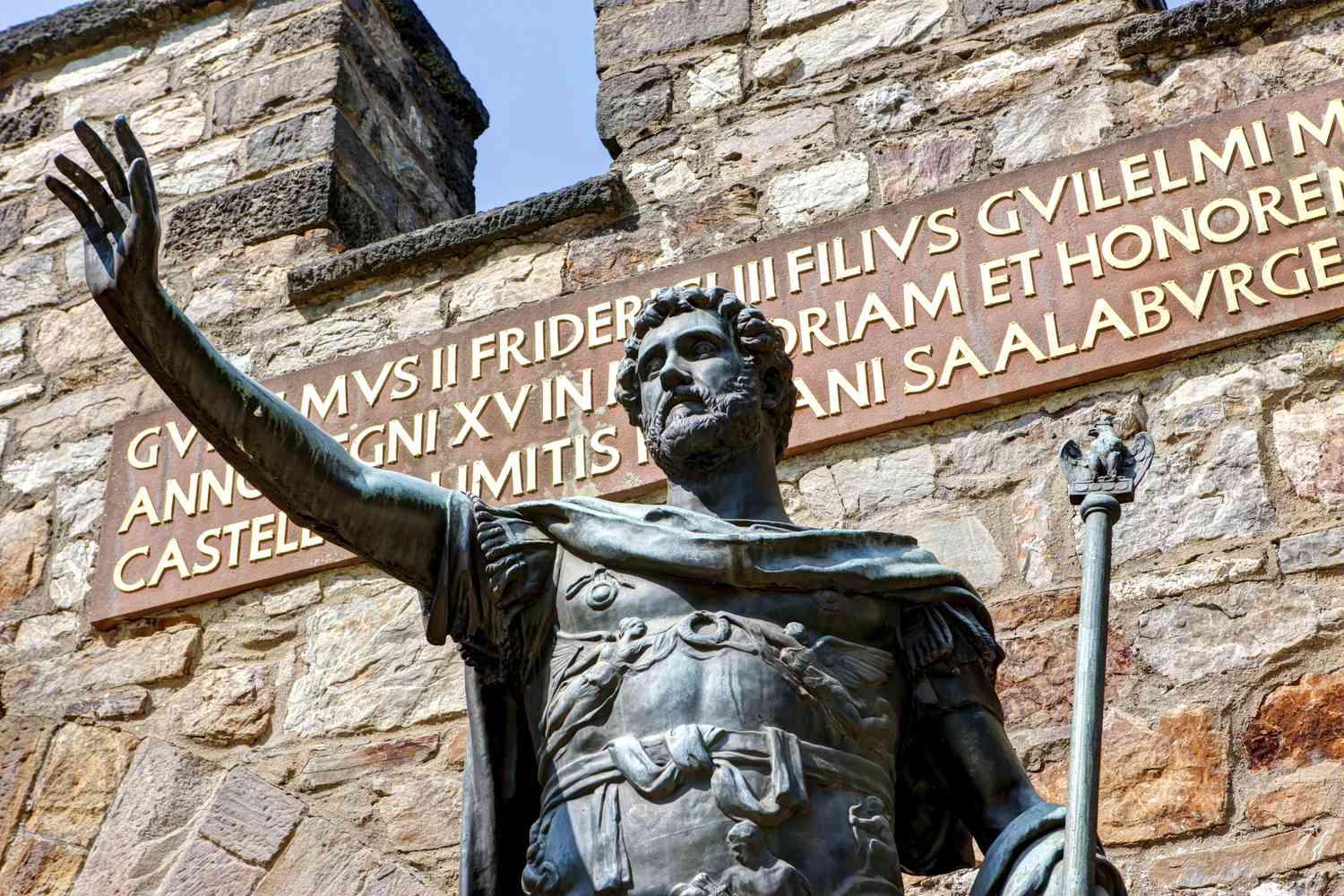
The Emperor of the Holy Roman Empire statue is an iconic landmark that draws visitors from around the world. This magnificent statue stands tall, symbolizing the power and grandeur of the Holy Roman Empire. While many people are familiar with its existence, there are several surprising facts about this historical treasure that they may not be aware of. From its origins to its symbolic meaning, these fascinating details shed light on the significance of the Emperor of the Holy Roman Empire statue. In this article, we will explore 12 surprising facts about this renowned landmark, delving into its history, cultural importance, and unique features. So, fasten your seatbelts and get ready to discover the intriguing world of the Emperor of the Holy Roman Empire statue!
Key Takeaways:
- The Emperor of the Holy Roman Empire statue is a towering symbol of power and authority, standing at 10 feet tall and made of high-quality marble, reflecting the opulence of the medieval period.
- This iconic statue, shrouded in mystery, inspires artists and attracts tourists from around the world, serving as a cultural symbol and a testament to the historical legacy of the Holy Roman Empire.
Fascinating Historical Significance
The Emperor of the Holy Roman Empire statue holds a captivating place in history, serving as a symbol of power and authority during the medieval period. Its grandeur and intricate design have made it a remarkable cultural landmark.
Marvelous Artistic Creation
The statue is a masterpiece of artistry, crafted with meticulous attention to detail. Its majestic stance and regal attire reflect the opulence and prestige associated with the Holy Roman Empire.
Monumental Size
Standing at an impressive height of 10 feet, the Emperor statue commands attention and exudes a sense of dominance. Its towering presence serves as a visual representation of the authority held by the rulers of the Holy Roman Empire.
Iconic Location
This magnificent statue is prominently displayed in the heart of the historical city center, serving as a focal point for tourists and locals alike. It stands as a symbol of the city’s rich heritage and cultural identity.
Symbolic Gestures
The Emperor statue features various symbolic gestures that convey different meanings. From the raised hand symbolizing authority and power to the intricate crown representing the royal lineage, every element has a significant historical significance.
Impressive Materials
The statue is sculpted from high-quality marble, reflecting the craftsmanship and dedication put into creating this extraordinary work of art. Its smooth texture and elegant finish add to its overall grandeur.
Historical Accuracy
Every detail of the Emperor statue is meticulously researched and accurately represented based on historical records and depictions. The craftsmen ensured that the statue reflects the clothing, accessories, and attributes of the rulers during the Holy Roman Empire.
Mysterious Origins
The exact origins of the Emperor statue remain shrouded in mystery, adding an aura of intrigue and fascination. While some believe it was commissioned by a specific ruler, others attribute its creation to a collaboration of renowned sculptors.
Cultural Symbol
The Emperor statue serves as a powerful cultural symbol, reflecting the ideals and values upheld by the Holy Roman Empire. It stands as a testament to the importance of preserving history and celebrating the legacy of past civilizations.
Inspiration for Artists
Throughout the centuries, the Emperor statue has inspired countless artists, poets, and writers. Its majestic presence and historical significance have served as a muse for creative individuals, producing works of art that pay homage to its splendor.
Popular Tourist Attraction
The Emperor of the Holy Roman Empire statue attracts visitors from all over the world, drawn by its incredible beauty and historical significance. It has become an iconic landmark that embodies the spirit of the city and its rich cultural heritage.
Preservation Efforts
Meticulous efforts are undertaken to preserve the Emperor statue for future generations. Regular maintenance, restoration, and conservation projects are carried out to ensure its longevity and the continuation of its historical legacy.
Conclusion
The Emperor of the Holy Roman Empire statue is a significant landmark that holds a rich history and numerous surprising facts. From its impressive height to its intricate details, this statue is truly a marvel of craftsmanship. Whether you visit it for its artistic value or its historical significance, you’re bound to be amazed by its grandeur and beauty.
As a symbol of power and authority, the Emperor of the Holy Roman Empire statue continues to attract visitors from all over the world. It represents an era of immense power and influence in Europe’s history. So, the next time you have the chance to see this iconic statue, take a moment to appreciate its significance and the fascinating facts surrounding it.
FAQs
1. How tall is the Emperor of the Holy Roman Empire statue?
The statue stands at an impressive height of 20 feet, making it a towering landmark.
2. When was the Emperor of the Holy Roman Empire statue built?
The statue was constructed in the late 18th century, around the year 1782.
3. Who commissioned the creation of the Emperor of the Holy Roman Empire statue?
The statue was commissioned by Emperor Franz Joseph II, who wanted to commemorate his reign and the power of the Holy Roman Empire.
4. What material was used to create the statue?
The statue was made from bronze, a durable and long-lasting material that has preserved its majestic appearance over the centuries.
5. Are there any symbolic elements incorporated into the statue?
Yes, the statue features several symbolic elements, including the imperial crown, which represents the emperor’s authority, and the scepter, symbolizing his power.
6. Can visitors get close to the Emperor of the Holy Roman Empire statue?
Yes, visitors can get relatively close to the statue and admire its intricate details. However, touching the statue may be prohibited to ensure its preservation.
7. Are there any guided tours available for the Emperor of the Holy Roman Empire statue?
Yes, many tour companies offer guided tours of the statue, providing valuable insights into its history and significance. It’s a great way to enhance your experience and learn more about this iconic landmark.
8. Is there an entrance fee to see the Emperor of the Holy Roman Empire statue?
The entrance fee, if any, may vary depending on the location where the statue is housed. It’s recommended to check with the specific venue or attraction for the latest information regarding fees.
Immerse yourself in
Was this page helpful?
Our commitment to delivering trustworthy and engaging content is at the heart of what we do. Each fact on our site is contributed by real users like you, bringing a wealth of diverse insights and information. To ensure the highest standards of accuracy and reliability, our dedicated editors meticulously review each submission. This process guarantees that the facts we share are not only fascinating but also credible. Trust in our commitment to quality and authenticity as you explore and learn with us.


